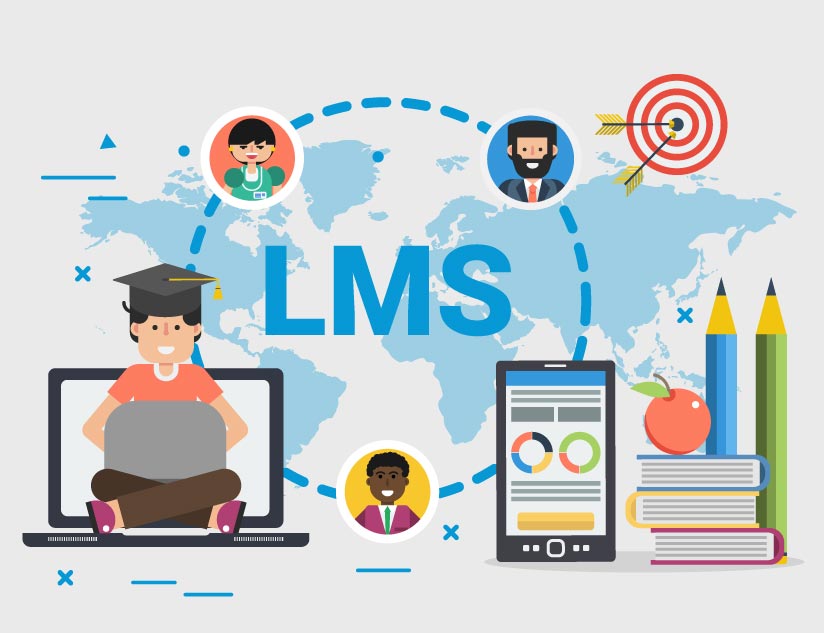Integrating Machine Learning in Education Technology
August 3rd, 2017
Whether it’s businesses, IT companies, financial services, or even education, Artificial Intelligence (AI) is being integrated into various industries. However, Deep Learning and Machine Learning are terms thrown around as frequently as AI to describe things and processes we don’t completely understand. So, what do these terms mean?
The simplest way to define the relationship between AI, Deep Learning, and Machine Learning is to imagine them as concentric circles with AI as the largest set. Machine learning is a subset of AI while deep learning is a subset of machine learning.
Machine learning, an application of AI, can be defined as a method of teaching computers to synthesize data and use it to make or improve predictions. As the name suggests, it’s a way to let machines learn on their own by accessing various types of data. Deep learning, a subset of machine learning, applies machine learning to solve any problem that requires human thought or artificial intelligence. Machine learning can be applied in classrooms where learning analytics programs use statistical models of student data, like test scores, assignments, attendance, learning material, etc., to provide a personalised feedback of students’ progress. For example, Content Technologies, Inc. (CTI) uses deep learning to allow educators to gather their learning material. CTI requires them to input the syllabus, based on which the system compiles textbooks that contain information relevant to the core content.
Machine learning and deep learning, however, can be differentiated on the basis of some key parameters:
- The Amount of data processed: This is the basic difference between deep learning and traditional machine learning. With small datasets, deep learning algorithms don’t perform optimally since they require huge amounts of data for a comprehensive understanding. Machine learning algorithms, on the other hand, work well with smaller datasets and can’t take on large amounts of data.
- Problem-solving method: Solving a problem using machine learning algorithms requires breaking it into different parts, solving the parts independently and combining them to arrive at the final result. Deep learning, in contrast, solves a problem end-to-end. Based on the principles of neural networks, deep learning separates the algorithm into layers, learning from the solution derived from the previous layer to solve the next one.
- Time and cost incurred: Machine learning is more time-consuming and cost-intensive since it requires more hand-coding in the feature engineering process. Feature engineering generates additional, relevant features from the existing raw data to facilitate the learning process in algorithms, and is followed by feature selection, which eliminates irrelevant or redundant features. This 2-step process is not only difficult but also time-consuming as the performance of most machine learning algorithms depends on how precisely the features are extracted. Deep learning algorithms, on the other hand, use neural network learning to create high-level features from the raw data, selecting and extracting relevant features on their own. This puts them a major step ahead of machine learning algorithms. Thus, deep learning greatly reduces the time and cost of feature engineering.
- Use in the industry: Interpretability is a major factor why deep learning is still not easily accepted in its use in industries. For instance, if we use deep learning to automate the scoring of e-Learning assignments, the scoring will be excellent and comparable to performance. But the issue is that it would not reveal the rationale behind assigning particular scores. On the other hand, machine learning algorithms give crisp rules surrounding their choices, making it easy to interpret the reasoning behind tasks.
Machine Learning and EdTech
Education today is largely based on students ‘learning’ facts and currently assessments measure how effectively those facts can be recalled, rather than measuring if those facts have been understood or not. Many experts are now trying to move away from this model by heading toward an education model that uses technology to make learning and teaching more efficient. This has created a huge potential for machine learning to become a tool for aiding educators. For instance, ALEKS and Knewton are adaptive learning systems for college and high-school that integrate machine learning analytics to track student knowledge, measure progress, and provide solutions accordingly.
The ‘one size fits all’ approach to teaching is no longer relevant and acceptable. The fact that different students learn at different speeds and come from different starting points calls for an inclusive approach to teaching and machine learning is central to this adaptive form of education. Machine learning is thus poised to change the education landscape in the following ways:
- Personalized learning paths: Students learn concepts at their individual speeds. Machine learning can help incorporate adaptive learning in classrooms through algorithms that let the students move ahead based on their speed of grasping concepts. The use of adaptive learning in EdTech means a much more customizable learning experience. Teachers can thus assess the understanding of an individual learner or a class as a whole. This insight allows teachers to adjust their pace and delivery according to learner progress, and be able to help each student individually, if required. For instance, MagicBoxTM allows publishers to design e-Learning modules that ask learners critical questions to spark their imagination and further their understanding of a subject. MagicBoxTM can also be used by teachers to have one-on-one time with the students requiring guidance on the topics they are not comfortable with.
- Content Analytics: Content analytics refers to machine learning platforms that optimize modules for learners and teachers. Through machine learning, content taught to students can be analyzed for maximum effect and optimized to take care of student needs. This can be seen in MagicBoxTM, a digital publishing and mobile distribution platform. It enables educators and content providers to not just create and manage their e-Learning content, but also gain important insights into learner progress and understanding through a powerful set of analytics.
- Grading: Machine learning also helps teachers in grading assessments in less time and with greater accuracy. Current grading systems primarily rely on humans, but with machine learning assessments can be scored in an automated manner. As an example, software that detects plagiarism in essays is already used by educators worldwide.
- Automating repetitive tasks: Teachers in traditional classroom setups spend a lot of time on repetitive tasks such as attendance, collecting assignments, etc. With technology, these tasks can be automated, allowing teachers more bandwidth to spend time with students tackling modules, concepts, and discussing higher-order thinking.
- Learning analytics: Machine learning also has a pivotal role to play in tracking student learning and progress. Learning analytics is more than just providing data to teachers. Machine learning algorithms create value for the system through designing predictive learning paths for students. As students progress through a course with adaptive learning software, machine learning algorithms decide if reinforcement is required through additional content or if they have adequately mastered concepts and can move ahead. Learning analytics, thus, focuses on tracking student knowledge and enhancing their learning environment.
The K-12 world is fast embracing several adaptive learning platforms and game-based assessments to stay relevant to the EdTech revolution. The points mentioned above highlight the applications and benefits of machine learning being an integral part of education, and EdTech in particular. However, fears surrounding the replacement of teachers by machines are unfounded. Policy makers will need to work with teachers to instill confidence in new technologies and provide machine learning tools that will develop learners as individuals.













